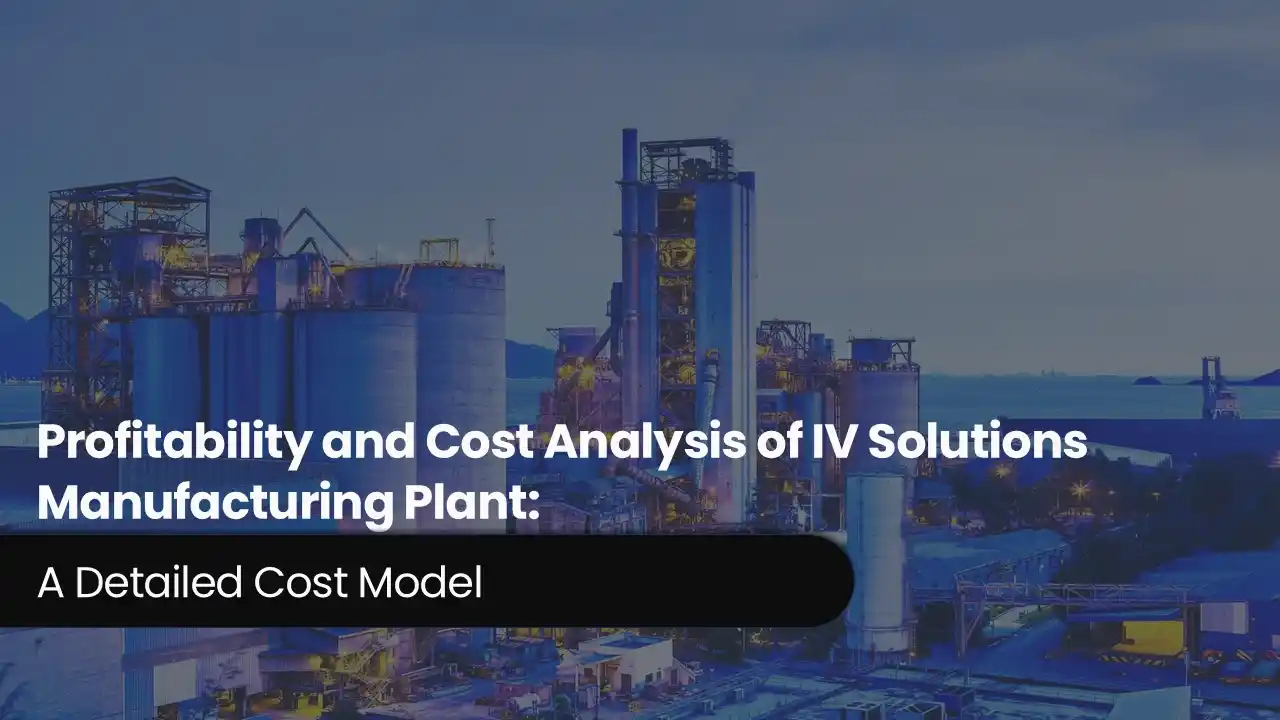Economic Breakdown of Colloidal Silica Manufacturing Plant: A Cost Model Approach
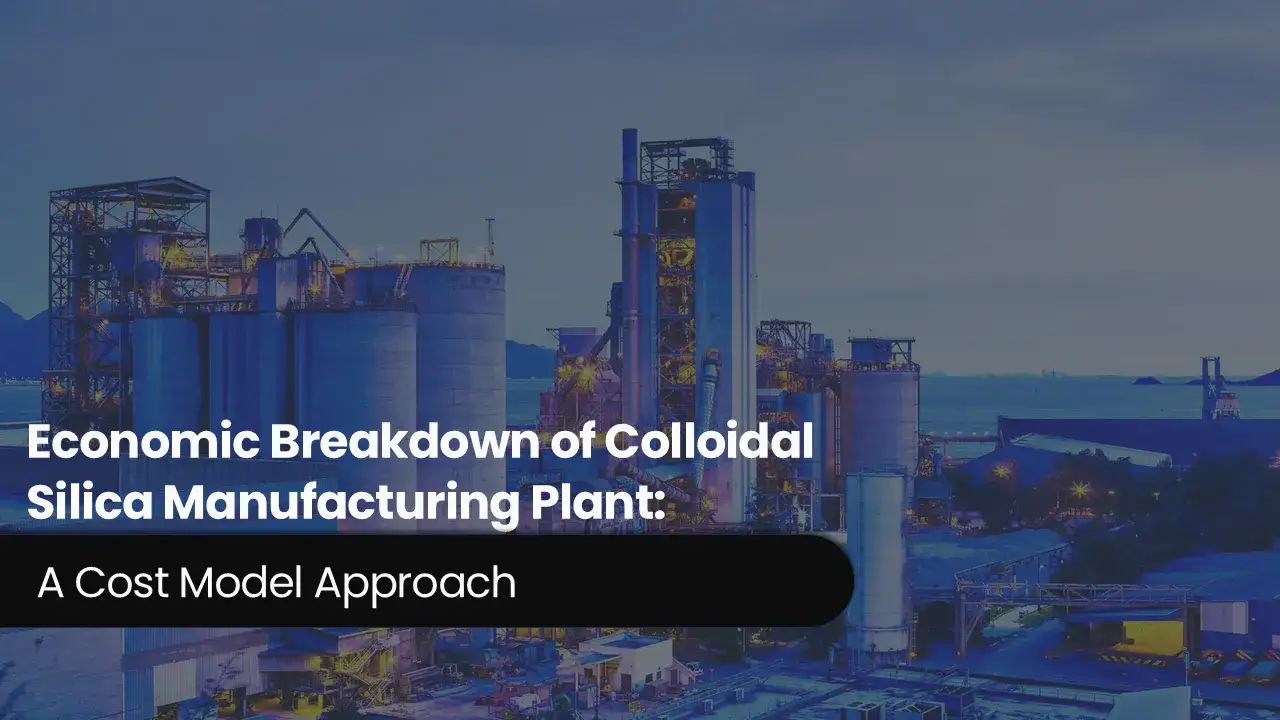
Amorphous silicon dioxide (silica) particles dispersed in water are known as colloidal silica. In order to produce these amorphous silica particles, silica nuclei from silicate solutions are polymerised in an alkaline environment to create silica sols with a high surface area and a nanometre size. The surface of the silica nanoparticles is then charged, which causes the particles to reject one another and create a stable colloid, or dispersion. Although colloidal silica comes in a variety of grades, all of them are made up of silica particles that range in size from roughly 2 nm to 150 nm. The particles might exist as discrete particles or as slightly organised aggregates, and they can have a spherical or slightly irregular shape. According to an IMARC study, the global colloidal silica market size by volume reached 180.8 Thousand Tons in 2024. Looking ahead, the market is expected to grow at a CAGR of approximately 4.85% from 2025 to 2033, reaching a projected volume of 277.4 Thousand Tons by 2033. Rising demand from a variety of industries, such as electronics, automotive, construction, and healthcare, is propelling the colloidal silica market. Because colloidal silica can produce precise surface finishing, it is frequently utilised in semiconductor polishing (CMP slurries) in the electronics industry. Because of its heat stability and binding qualities, colloidal silica is used in coatings, adhesives, and investment casting in the automotive and aerospace sectors. Growing infrastructure development in the construction industry is increasing demand for concrete densifiers and coatings based on colloidal silica, which improve resistance and durability. Colloidal silica is also used in the pharmaceutical and healthcare sectors for controlled drug delivery applications and as a pharmaceutical excipient.
Trending Insights on Colloidal Silica: Latest News and Developments
- In January 2024, Nouryon declared that it has expanded its production capacity at its Green Bay, Wisconsin, US, manufacturing facility by about 50% for its Levasil® colloidal silica products. In addition to strategically expanding the company's global colloidal silica manufacturing footprint to service both regional and international customers, the increase responds to the growing demand for colloidal silica, especially in North America.
- In November 2023, Evonik is constructing a new factory to produce ultra-high purity colloidal silica in Weston, Michigan, USA. This project is anticipated to result in a total capital expenditure of $7.9 Million in 2023 and 2024.
- In June 2020, Grace & Co. announced the launch of a new 8,200-square-meter colloidal silica unit at its flagship manufacturing and research and development facility in Worms, Germany.
Case Study on Cost Model of Colloidal Silica Manufacturing Plant
Objective: One of our clients has approached us to conduct a feasibility study for establishing a mid to large-scale colloidal silica manufacturing plant in United Arab Emirates. We have developed a detailed financial model for the plant's setup and operations. The proposed facility is designed with an annual production capacity of 25,000 tons of colloidal silica and will cover a land area of 15,000 square meters.
Manufacturing Process: The first step in making colloidal silica is making a sodium silicate solution, often known as water glass, which is the main raw material. To enable additional processing, this solution is then diluted with deionised water to reach the required concentration. The diluted solution next passes through ion exchange, which produces silicic acid by removing sodium ions. To produce high-purity colloidal silica, this step is essential. After that, the pH is adjusted with an acid or base to stabilise the silica particles and regulate their growth. After that, the mixture is filtered and purified to guarantee that all contaminants are eliminated, and that the particle size distribution is consistent. An alkali or other stabilising agent is used as part of a stabilisation process to increase stability. The solution can be concentrated if necessary to change the final silica content, which is usually about 30%. Colloidal silica, the finished product, is a stable suspension of silica particles at the nanoscale in water that can be used in a variety of industries, such as electronics, coatings, construction, and medicine.
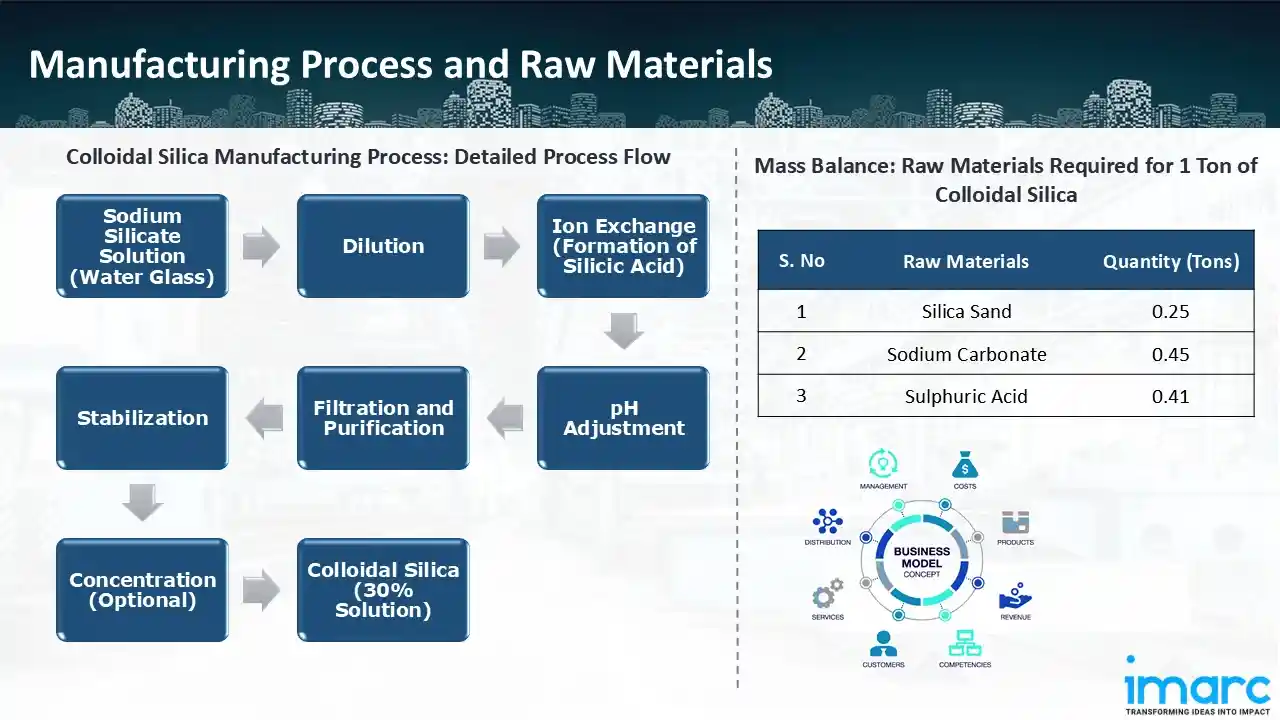
Mass Balance and Raw Material Required: The primary raw materials utilized in the colloidal silica manufacturing plant include silica sand, sodium carbonate and sulphuric acid. To manufacture 1 ton of colloidal silica, we require 0.25 ton of silica sand, 0.45 tons of sodium carbonate, and 0.41 tons of sulphuric acid.
List of Machinery:
The following equipment was required for the proposed plant:
- Intake equipment
- Dosing and weighting equipment
- Mixer and transportation equipment
- "Electric equipment and automatic batching control
- system"
- Refractory materials
- Mechanical equipment related to furnace
- Combustion equipment related to furnace
- Instrument and automatic control system
- Boiler
- Dissolved autoclave
- Measuring hopper
- Middle tank of liquid sodium silicate
- Waste heat recovery system equipment
- Plate-type Filter
- Liquid sodium silicate washing tank (tank only)
- Storage tanks of sodium silicate
- Pumps
- Steel platform for roller and plate-type filter
- Pipe of valves for internal system
- Sodium silicate dissolution and modulation system equipment
- Sodium silicate precipitation recovery system equipment
- Raw material storage system
- Dissolution Tank
- Ion-Exchange Resin Columns
- Stabilizing Tank and Dosing System (For pH Control)
- Concentration Tank
- Filtration Unit
- Storage System
- Packaging Machine (Filling and Sealing Machinery)
- Natural gas combustion furnace
- Laboratory and testing equipment
- Water Treatment Plant
Techno-Commercial Parameter:
- Capital Investment (CapEx): The total capital cost for establishing the proposed colloidal silica manufacturing plant is approximately USD 16.36 Million. Machinery costs account for 65.1% of the total capital cost, while civil works costs are estimated at around USD 3.60 Million. The land and site development cost for colloidal silica manufacturing plant constitutes a significant portion of the total capital cost, including the land registration charges, development charges of boundary walls, steel gates and other developmental charges. This ensures a strong foundation for safe and efficient plant operations.
- Operating Expenditure (OpEx): In colloidal silica manufacturing plant, the operating cost for the first year of operations is projected at USD 13.08 Million. This estimate includes the cost of raw materials, utilities, depreciation, taxes, packing cost, transportation cost, and repairs and maintenance. By the fifth year of operations, the total operational cost is expected to increase by 17.9% compared to the first year, driven by inflation, market fluctuations, and potential rises in the cost of key materials. Disruptions to the supply chain, rising consumer demand, and shifts in the state of the world economy are some of the factors causing this growth.
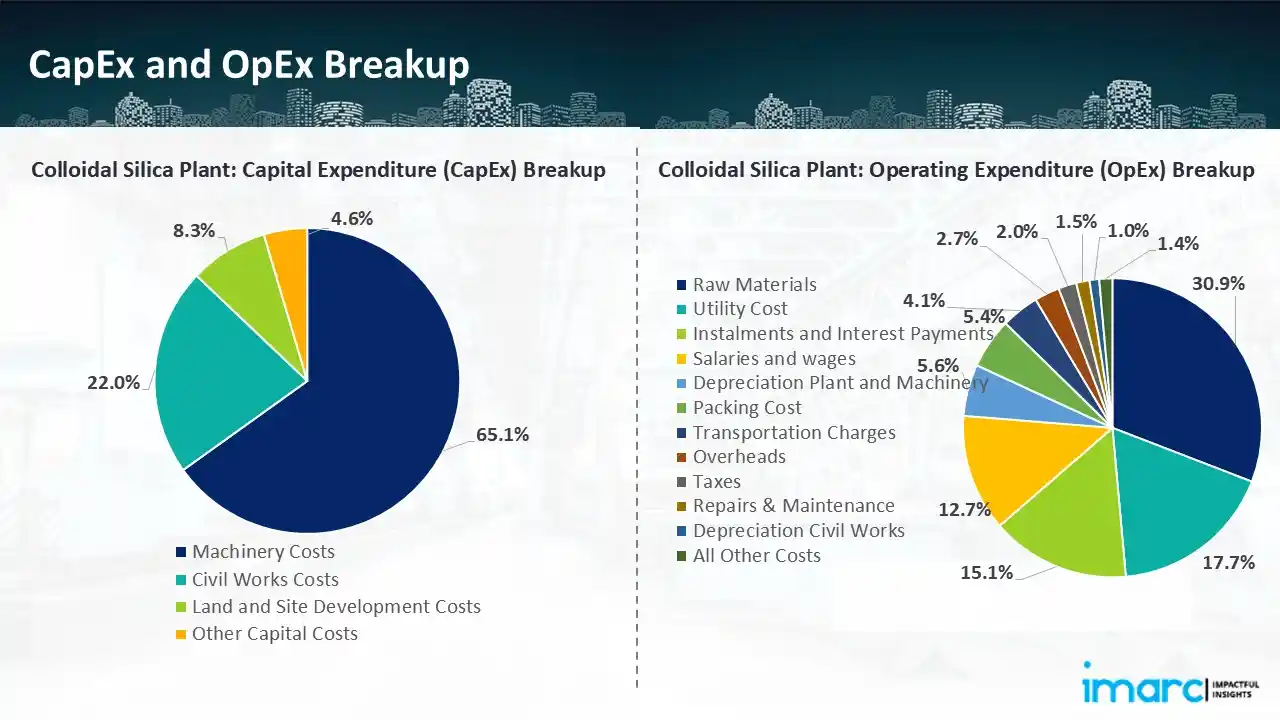
- Profitability Analysis Year on Year Basis: The proposed colloidal silica plant, with a capacity of 25,000 tons of colloidal silica annually, achieved an impressive revenue of USD 23.38 Million in its first year. We assisted our client in developing a detailed cost model, which projects steady growth, with revenue reaching USD 29.61 Million by year 5. Gross profit margins improve from 15.7% to 19.5%, and net profit margins rise from 6.3% to 14.7%, highlighting strong financial viability and operational efficiency.
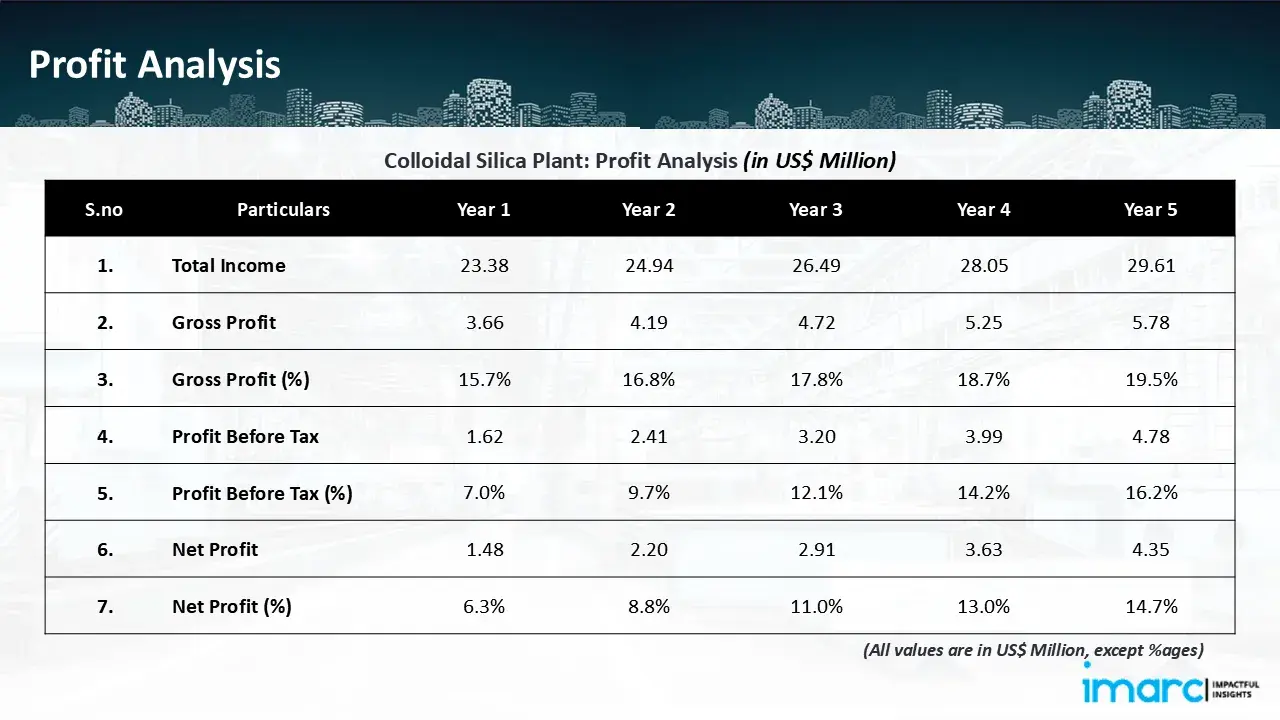
Conclusion
Our colloidal silica manufacturing plant's financial model was meticulously modelled to satisfy the client's requirements. It provided a thorough analysis of production costs including capital expenditures, manufacturing processes, raw materials, and operating costs. The model predicts profitability while accounting for market trends, inflation, and any shifts in the price of raw materials. It was created especially to satisfy the demand of producing 25,000 tons of colloidal silica annually. Our commitment to offering precise, client-cantered solutions that ensure the long-term success of significant industrial projects by giving the client useful data for strategic decision-making is demonstrated by this comprehensive financial model.
IMARC's Financial Model Expertise: Helping Our Clients Explore Industry Economics
IMARC is a global market research company that offers a wide range of services, including market entry and expansion, market entry and opportunity assessment, competitive intelligence and benchmarking, procurement research, pricing and cost research, regulatory approvals and licensing, factory setup, factory auditing, company incorporation, incubation services, recruitment services, and marketing and sales.
Brief List of Our Services: Market Entry and Expansion
- Market Entry and Opportunity Assessment
- Competitive Intelligence and Benchmarking
- Procurement Research
- Pricing and Cost Research
- Sourcing
- Distribution Partner Identification
- Contract Manufacturer Identification
- Regulatory Approvals, and Licensing
- Factory Setup
- Factory Auditing
- Company Incorporation
- Incubation Services
- Recruitment Services
- Marketing and Sales
Under our factory setup services, we assist our clients in exploring the feasibility of their plants by providing comprehensive financial modeling. Additionally, we offer end-to-end consultation for setting up a plant in India or abroad. Our financial modeling includes an analysis of capital expenditure (CapEx) required to establish the manufacturing facility, covering costs such as land acquisition, building infrastructure, purchasing high-tech production equipment, and installation. Furthermore, the layout and design of the factory significantly influence operational efficiency, energy consumption, and labor productivity, all of which impact long-term operational expenditure (OpEx). So, every parameter is covered in the analysis.
At IMARC, we leverage our comprehensive market research expertise to support companies in every aspect of their business journey, from market entry and expansion to operational efficiency and innovation. By integrating our factory setup services with our deep knowledge of industry dynamics, we empower our clients to not only establish manufacturing facilities but also strategically position themselves in highly competitive markets. Our financial modeling and end-to-end consultation services ensure that clients can explore the feasibility of their plant setups while also gaining insights into competitors' strategies, technological advancements, and regulatory landscapes. This holistic approach enables our clients to make informed decisions, optimize their operations, and align with sustainable practices, ultimately driving long-term success and growth.
Contact Us
Have a question or need assistance? Please complete the form with your inquiry or reach out by emailing us on sales@imarcgroup.com.

